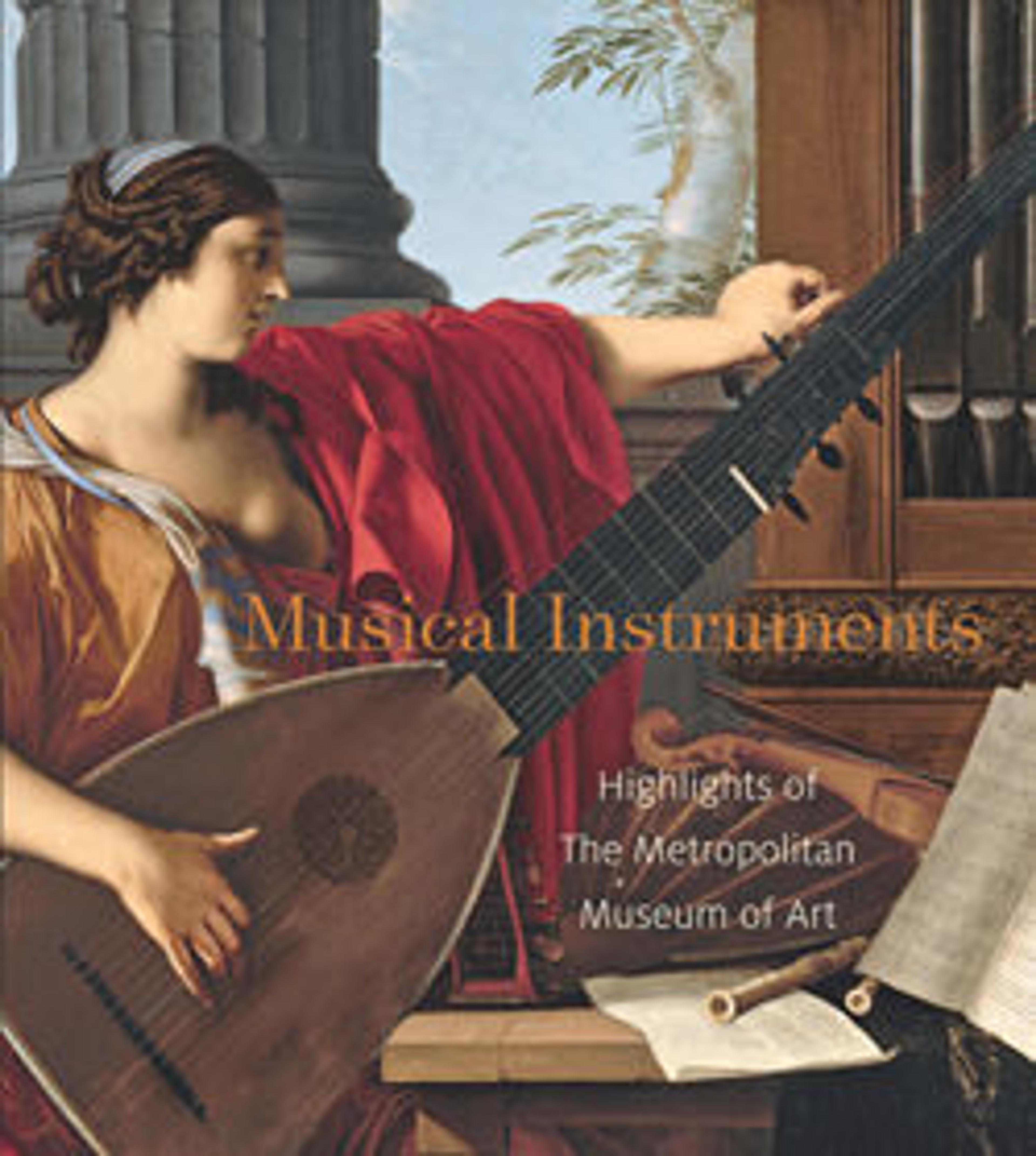Banjo
The 1840s was a pivotal decade in American music. The blackface minstrel show, which was first was performed in New York City in 1843, became America’s most popular form of theatrical entertainment. The 5-string banjo was an intrinsic part of the minstrel performance and soon became an immensely popular instrument. Baltimore drum maker William Boucher began producing banjos around1845 and is credited with being one of the first professional banjo makers. His first banjos consisted of a banjo neck attached to a drum-like steam-bent wood hoop with two skin membranes, one stretched over the top and the other over the bottom of the hoop. He soon dispensed with the second skin head. Boucher claimed that he invented the first metal screw-type mechanism for tightening banjo heads. While this is questionable, the tightening system on this banjo is elegantly simple and fuctional. Wingnuts tighten metal hooks attached to a metal band that stretches the skin over the wood hoop. The bottom of the hoop is scalloped and the tightening mechanisms are located at the narrowest portion of the hoop. This stops the wingnuts from protruding beyond the bottom edge thereby preventing them from coming in contact with the banjo player. While scroll shaped headstocks were common on early banjos — and on the earliest of C. F. Martin’s guitars — Boucher’s were especially elegant, with the added detail of a stepped cone-shaped finial gracing the volute. Like many of Boucher’s banjos, this example is grain painted to simulate rosewood. The unusually small size suggests that it was made for a woman. The "Wm. E. Boucher Jr./ Baltimore" brand is stamped on the back of the neck. (Peter Szego, 2020)
Artwork Details
- Title:Banjo
- Maker:William Esperance Boucher, Jr. (Hanover, Germany 1822–1899 Baltimore, Maryland)
- Date:ca. 1845
- Geography:Baltimore, Maryland, United States
- Culture:American
- Medium:Hardwood, calfskin, brass, iron
- Dimensions:L. 34 1/2 × W. 11 × D. 3 1/4 in. (87.6 × 27.9 × 8.3 × 87.6 cm)
Head Diameter: 11 in. (27.9 cm) - Classification:Chordophone-Lute-plucked
- Credit Line:Gift of Peter Szego, 2013
- Object Number:2013.639a, b
- Curatorial Department: Musical Instruments
More Artwork
Research Resources
The Met provides unparalleled resources for research and welcomes an international community of students and scholars. The Met's Open Access API is where creators and researchers can connect to the The Met collection. Open Access data and public domain images are available for unrestricted commercial and noncommercial use without permission or fee.
To request images under copyright and other restrictions, please use this Image Request form.
Feedback
We continue to research and examine historical and cultural context for objects in The Met collection. If you have comments or questions about this object record, please contact us using the form below. The Museum looks forward to receiving your comments.
